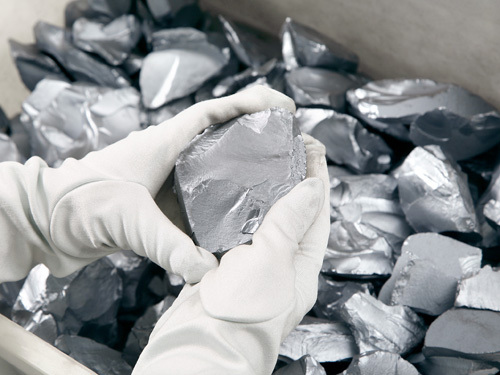Polysilicon Industry Overcapacity Reappears

The past few years have been the ups and downs of the domestic polysilicon industry. Nowadays, with the acceleration of the global photovoltaic industry demand, the polysilicon market conditions are gradually picking up. Domestic companies have regained their confidence to resume production and expand production. Large-scale projects under construction and proposed projects have continued to emerge, and the investment boom has hit again. In this regard, industry experts have warned companies: polysilicon industry "reform the rivers and mountains" in full swing, but can not forget the "old injury" pain, otherwise it will be possible to enter a new round of difficult period.
Capacity continues to expand
After the explosive growth of polysilicon production capacity in the past few years, despite the painful digestion process, the current production capacity still maintains a certain growth rate. According to data from the “2014 China International Silicon Industry Conference and Photovoltaic Industry Expoâ€, during the five years from 2007 to 2011, China’s polysilicon production capacity surged from 45,000 tons/year to 146,000 tons/year, with an average annual growth rate of 139%. . From 2012 onwards, with the rapid decline in profits of the polysilicon industry, new investments tend to be rational. As of the first half of 2014, China's polysilicon production capacity was 235 thousand tons per year, an increase of 23% from 2012, and the average annual growth rate was higher than before. It dropped sharply to 8.6%.
A set of data may support the fact that the rapid growth of investment in the industry's improving background: In the first half of this year, China's polysilicon industry realized sales revenue of 9.58 billion yuan, up 144.8% year-on-year, and realized a profit of about 600 million yuan; while the new investment was as high as 65 100 million yuan. According to Zhao Jiasheng, vice president of the China Nonferrous Metals [0.52%] Industrial Association and president of the Silicon Industry Branch, the current effective capacity of producing polysilicon enterprises is around 150,000 tons/year, including the top four leading companies (Jiangsu Zhongneng and Luoyang). The capacity of Silicon, Xinjiang Special Change and Xinjiang Daquan reached 98,200 tons/year, accounting for 65.5% of the total production capacity. In the first half of 2014, China's polysilicon production totaled 64,000 tons, an increase of 113% year-on-year.
At the same time, imports still maintain a relatively high growth rate, and domestic supply pressures are increasing day by day. According to China Customs data, China’s imports of polysilicon in the first half of the year amounted to 46,000 tons, a year-on-year increase of 17.4%. Among them, the import volume through processing trade reached 34,000 tons, accounting for 74.2% of the total import volume; through the re-export trade mode of Taiwan, the import volume reached 0.5 million tons, accounting for 10.4% of the cumulative import volume.
"In 2013, China's installed capacity of photovoltaics reached 11.8 million kilowatts, which accounted for 29.5% of the global photovoltaic market share, making it the world's largest photovoltaic installed country." Zhao Jiasheng said that in the first half of this year, the production of crystalline silicon cells increased to 18GW, an increase of 56% year-on-year. The domestic photovoltaic sector inventories increased by about 5 GW.
The comprehensive start-up of the domestic photovoltaic market changed the situation that China's polysilicon terminal demand was restrained by foreign countries and supported the development of the domestic polysilicon industry. However, in spite of policy support, China's PV installations still face many problems, including the difficulties of grid-connected PV power plants and subsidies being difficult to arrive in time. The distributed PV power plants have problems with difficult project location, poor economic evaluation, and difficulty in financing. And other issues.
Polysilicon spot prices showed a trend of rapid rise and fall in the first half of the year. "As a result of policy support and strong downstream demand, the spot price of polysilicon in China quickly rose from RMB 137,000/ton in early January 2014 to RMB 167,000/ton.†Zhao Jiasheng said, but since mid-March, it has been “doubled by the United States and Europeâ€. Anti-repression, China's export of photovoltaic products was blocked, causing the spot price of polysilicon to slowly decline to 163,000 yuan / ton.
Socket Head Cap Screws,Hexagon Socket Head Cap Screw,Hexagon Socket Round Head Screw,Phillips Hex Head Screw
we enhanced the hardness of the screws by heat treatment which can efficiently prevent slip and break. With a stable and reliable quality, Lanejoy screws will be your best choice.
China Socket Head Cap Screws,Hexagon Socket Head Cap Screw,Hexagon Socket Round Head Screw,Phillips Hex Head Screw, we offered that you can trust. Welcome to do business with us.
Machine screw,tapping screw,self drilling screw,flat head screw,Pan head screw
Shenzhen Lanejoy Technology Co.,LTD , https://www.compressionspring.net